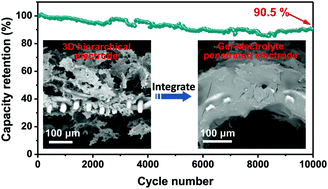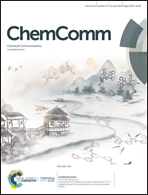Electrodepositing a 3D porous rGO electrode for efficient hydrogel electrolyte integration towards 1.6 V flexible symmetric supercapacitors†
Abstract
A reduced graphene oxide electrode with a three-dimensional porous structure is synthesized based on a facile electro-reduction strategy with subsequent freeze-drying. The 3D architecture enables the full penetration of the PVA-NaClO4 hydrogel electrolyte, giving rise to a 1.6 V quasi-solid-state symmetric supercapacitor with good flexibility, good temperature/pressure tolerance and high areal/volumetric energy and power densities.



 Please wait while we load your content...
Please wait while we load your content...